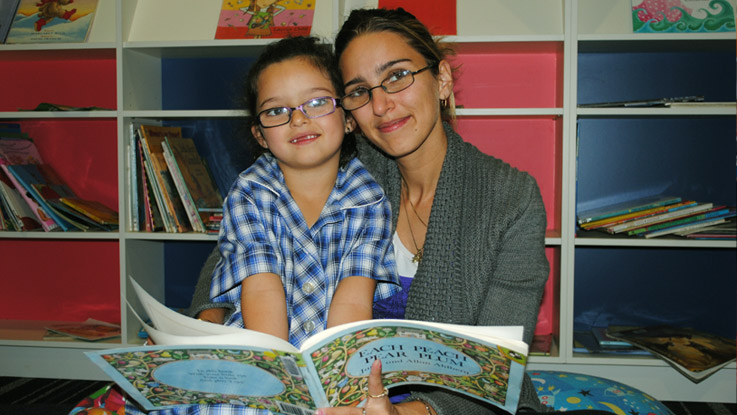
The Conversation: Low attendance in Year 7 may mean you are less likely to finish school
A study of more than 30,000 students has confirmed the link between improving school attendance rates in Year 7 and the likelihood of completing high school.
Nicholas Biddle, Australian National University
Conducted by the Smith Family, the research found around three-quarters of students from low-income families with higher attendance rates in the first year of high school completed Year 12. This was compared to less than half of those with very low attendance in Year 7.
It also showed students with very low Year 7 attendance rates, who improved their attendance by Year 9, were much more likely to complete Year 12 than those whose rates remained low.
The fact a student’s outcomes when young are predictive of their eventual achievement isn’t surprising. But from a policy perspective, this confirms that a student’s background matters, and that targeting students early is vital.
The study is also a great example of how we can test whether educational programs are worth our investment. By tracking students through time, the Smith Family has created the largest dataset of disadvantaged students in Australia that combines survey and administrative data, and one of the largest such datasets in the world.
The study
The Smith Family has been running a program to provide resources for students from low-income families. Called Learning for Life, the program aims to support these students to stay in school and go on to further studies.
Students in the program (and their families) receive a biannual payment, a program co-ordinator who works with the family, and access to a number of other specific programs. These include targeted literacy and numeracy programs, after-school learning clubs, mentoring and career activities, and training in digital and financial literacy for parents or carers.
About 38,000 children receive this support across Australia each year, in all states and territories.
The Smith Family has been tracking the students’ progress and outcomes over time. This has been possible due to careful design and use of a unique student identifier. This is a seven-digit number specific to each student but unrelated to their name, address or other identifying information. When students interact with the program, the activity is recorded against their identifier.
In addition to program data, the Smith Family is able to link in school achievement, attendance and completion data, as well as a range of other background variables.
A key finding in this latest report is that changes in school attendance are associated with better school outcomes. Specifically, 61% of students who improved their attendance between Year 7 and 9 completed Year 12, compared to only 35% of those whose attendance remained very low across Years 7 and 9.
Other findings include:
- 88% of Year 9 students who achieved an A in English completed Year 12, compared to only 50% of those who achieved an E
- 82% of students who completed Year 12 were engaged in post-school work and/or study, compared to only 68% of those who only completed Year 10.
What we can learn
It is tempting to think that we know what works to improve educational outcomes, if only governments would fund what is needed. But that’s not the case.
We have a good idea about what tends to work and there have been a number of summary reports of existing evidence. One thing we know for sure is that investment in early childhood significantly increases achievement.
We also know that tutoring adolescents seems to be as effective – if not more effective – than investments in early childhood. This argues against the growing view that there is a point at which investments in youth are unlikely to yield significant returns.
But the majority of this knowledge comes from rigorous trial and error approaches conducted in other countries. Unfortuntely though, we haven’t made the same investments in Australia, so we don’t know as much as we should about which education policies and programs are effective in an Australian context and which aren’t.
We also haven’t made use of the potentially available, extensive administrative student datasets to anywhere near their full capacity. The Smith Family should be commended on making use of their own datasets to help understand the outcomes and trajectories of those they’re trying to serve. And ideally, such a dataset should be available to other researchers.
![]() Other programs, and governments in particular, should be making similar investments. Researchers and policymakers should be taking a humble and experimental approach to find out what works, who it works for, and what programs should be discontinued.
Other programs, and governments in particular, should be making similar investments. Researchers and policymakers should be taking a humble and experimental approach to find out what works, who it works for, and what programs should be discontinued.
Nicholas Biddle, Associate Professor, ANU College of Arts and Social Sciences, Australian National University
This article was originally published on The Conversation. Read the original article.
Media contacts:
Andrew Dickson | National Media Manager (National) - 0421 285 529 | andrew.dickson@thesmithfamily.com.au
Carla Horton | Senior Media Advisor (QLD & WA) - 0423 618 776 | carla.horton@thesmithfamily.com.au
Reid Jermyn | Media Advisor (VIC, SA & NT) - 0412 803 566 | reid.jermyn@thesmithfamily.com.au
Ben Chenoweth | Senior Media Advisor (NSW, ACT & TAS) - 0413 346 934 | ben.chenoweth@thesmithfamily.com.au
The Smith Family is a national children’s education charity that helps young Australians experiencing disadvantage to create better futures for themselves through harnessing the power of education. We partner with around 800 Australian schools and work with over 186,000 children and young people experiencing disadvantage access our education support programs to help them overcome. For more information, visit thesmithfamily.com.au
